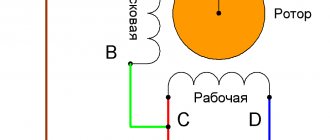This is what the structure of graphene looks like - just one layer of carbon atoms. Different periods of human history are closely related to certain materials. After the Stone Age came the Bronze Age, which was later replaced by iron. The last decades have been the “finest hour” of silicon, which gave us the digital revolution and the Internet. We are rapidly entering the next technological paradigm and are frantically looking for a new material worthy of serving as its symbol. It is possible that it will be carbon, or rather, one of its varieties - graphene.
In recent years, this material has been constantly heard. Graphene is called - no more, no less - the most important discovery of the 21st century and does not spare superlatives in its descriptions. Adherents of technological progress promise us a new marvelous “graphene” world, in which we will find ourselves literally tomorrow. In it, iron will not rust, people will be able to make fuel from the air and drink water directly from the ocean. Well, little things: we will get a new generation of electronics, heavy-duty armor, colossal-capacity batteries, and so on, and so on, and so on. Skeptics, listening to enthusiastic speeches of this kind, only grin habitually and disgustingly. Indeed, we have been promised the “graphene revolution” for about fifteen years, but so far there is not even an acceptable method for obtaining the material.
So what is graphene: a real breakthrough or another scientific and technical failure? Why did its discovery cause such hysteria, and what “carrots” does the use of this material promise us? And why hasn't it started yet?
Chemical and physical properties
In terms of its chemical composition, graphene is no different from diamond or graphite - it consists of the same carbon atoms, the whole “trick” is in their special spatial arrangement. It is this that leads to a colossal difference in physical properties. In traditional materials, atoms are arranged in three dimensions, so the objects around us have height, length and width. Graphene is an allotropic modification of carbon in which the atoms form a two-dimensional hexagonal crystal lattice just one atom thick. In fact, this is simply a single layer “pulled out” from a bulk crystal of a substance - it does not have a third dimension.
Graphene is the strongest material we know of.
Graphene is the first two-dimensional material produced by scientists. Thanks to such a unique atomic structure, it can “boast” a number of amazing properties:
- huge thermal conductivity;
- simply exorbitant mechanical strength;
- flexibility;
- high electrical conductivity;
- impermeable to most liquids and gases;
- transparency.
But the most striking thing is that, despite its atomic thinness, graphene is absolutely stable; it does not decay, although many scientists did not believe in this. Back in the 1930s, outstanding physicists Rudolf Peierls and Lev Landau argued that two-dimensional materials would be unstable and would quickly collapse under the influence of external factors. It turned out that atoms are held together due to special vibrations.
The study of this miracle material continues, and it never ceases to amaze researchers. For example, it was recently discovered that bilayer graphene behaves like a superconductor in a certain position, although this had not been assumed before.
The discovery of graphene inspired scientists so much that literally within ten years, three more two-dimensional materials with similar properties were obtained: silicene - based on silicon, phosphorene - phosphorus and germanene - germanium.
Physics
The physical nature of graphene is explained by the electrical properties of the atoms of the substance. The material has general similarities to graphite and diamonds.
Theory
Theoretical studies 70 years ago predicted the existence of such a substance as graphene. It was argued that carbon is capable of creating crystalline two-dimensional spatial lattices in the form of the thinnest films 1 atom thick. The theory was supported by practical experiments in 2012, when the first samples of the nanomaterial were obtained.
Crystal structure
A group of regular hexagons forms a lattice, reflecting the equivalent hexagonal structure of carbon atoms. In the figure, the unit cell is highlighted with a yellow background. Atoms with vectors are visible in the pink circle. The blue and red circles represent the different sublattices of the crystal, which are the basis of the lattice.
Crystalline graphene lattice
Zone structure
The essence of the term expresses the close bonds of electrons. Electrons revolve around the nucleus of a carbon atom. Three of them are connected to neighboring atoms, forming bonds in the crystal lattice. The fourth electron forms bonds in the same plane. The band structure diagram of graphene looks like cones.
Zone structure cones
Linear dispersion law
The identification of the band structure of the nanosubstance made it possible to derive the dispersion law for one-dimensional nanotubes.
The dispersion law is defined by the Dirac equation. The mathematical expression confirms the linear dependence of the dispersion and follows from the Schrödinger equation for the band structure of a substance at low electron energy costs.
Effective mass
The linear dispersion law determines the effective mass of electrons and holes in the structure of a nanomaterial, which has no value. But when electrons rotate around the nucleus, a different mass is obtained, called Landau energy.
Chirality and Klein's Paradox
The three-dimensional Dirac equation for particles without mass (neutrinos) defines a constant value - helicity in quantum electrodynamics. An analogue has been identified in graphene, which is called chirality, that is, the projection of pseudospin in the direction of motion.
Experiment
Almost all experiments involve exfoliation of scales—crystalline lattices. The extraction of graphene as a result of the experiments is described above.
Conductivity
It was observed that the nanomaterial behaves like a semiconductor. Because of this, graphene has the potential to completely replace silicon in integrated circuits. This will bring significant economic benefits from the production of cheap radio components.
Quantum hall effect
When a two-dimensional crystal lattice is exposed to a perpendicularly directed magnetic field, the Hall effect occurs. The interaction of the directional movement of current in graphene with the transverse magnetic flux causes a voltage, which is called the Hall effect.
How was the “material of the century” discovered?
The hypothesis about the existence of a two-dimensional form of carbon was put forward in the 19th century, but it was not actually confirmed for a long time. In 1859, Benjamin Brodie first synthesized graphene oxide, but it was only in 1948 that the extremely thin thickness of this material was demonstrated using an electron microscope. Later, scientists discovered that among the graphene oxide crystals there are particles one atom thick. In the 70s, attempts were made to grow monolayer carbon on various metal substrates.
The “godfather” of this material was Hans-Peter Böhm, who in 1986 proposed calling single-layer carbon graphene. In the late 90s, Yoshiko Ohashi studied the electrical properties of thin graphite films with a thickness of several tens of atomic layers.
The discoverers of graphene are Geim and Novoselov. In 2010, they received the Nobel Prize for this work.
For the first time, two British scientists of Russian origin, Andrei Geim and Konstantin Novoselov, managed to obtain graphene. To do this, they used the most available materials - a piece of graphite, ordinary tape and, of course, the famous Russian ingenuity. Scientists applied a small amount of graphite to the adhesive tape, after which it was glued and unstuck many times, each time dividing the substance in half. When the spot became completely transparent, the resulting graphene was transferred to the substrate. This method was later called the “exfoliation method.”
In 2010, Geim and Novoselov received the Nobel Prize and a very offensive nickname from journalists - “garbage physicists.” Scientists around the world were finally able to study graphene, because there was enough adhesive tape in any laboratory. This was a real breakthrough: according to people who study this issue, in recent years we have learned much more about two-dimensional materials than in the entire previous century. On the Internet you can easily find a detailed description of the Geim and Novoselov method and, if you wish, you can repeat it at home.
Position of the Russian government
Watch
In 2022, a group of projects, Graphene Technology Group, was formed, co-founded by Maxim Gudkov, Maxim and Maxim Rabchinsky. The group includes projects Graphene Technology, GraphSensors and GraphApta (Graph-SK LLC, GraphSensors LLC). The group has developed a low-cost and scalable method for the synthesis of graphene oxide, which makes it possible to obtain high-purity graphene oxide (impurity fraction does not exceed 0.1 at.%) with the required monolayer particle sizes in the range from 500 nm to 100 μm. Scalable methods have also been developed for preparing a set of functionalized graphenes with a controlled composition of functional groups. According to project manager Maxim Gudkov, the materials produced are of great interest for the electronics industry (touch screens, supercapacitors, various sensors and microelectronic chips), the composite materials industry (aerospace industry, medical implants, engineering materials), for the catalytic industry (carriers for hydrogen energy catalysts) and others. Over the coming year, the company plans to increase production volume to 10 kg of graphene oxide per month, which will reduce the price from the current 695 rubles. for 1 g up to 280 rub.
A new era in electronics?
Graphene is a unique material in its electrical conductivity: its resistance is 35% less than that of copper, and in charge carrier mobility it surpasses both silicon and indium antimonide.
Memory chips and microprocessors existing today are already breaking the technological boundaries of 10 nanometers. The process of further miniaturization presents significant difficulties. Voices are growing louder that we have almost reached the limits of silicon chips. Today, developers are stuck at a clock speed of about 4 GHz, unable to provide a further increase in performance.
Graphene can be used to make flexible screens for electronic devices. Most likely, this will be the first application of this material
Silicon is good for microelectronics, but it also has a significant drawback - low thermal conductivity. With increasing element density and increasing clock speeds, this becomes a serious barrier to further development of the industry.
True, to make a field-effect transistor from graphene, you need to somehow create a band gap in it in order to set two states suitable for binary logic: non-conducting and conducting. However, several methods have already been proposed to solve this problem, and this allows us to hope for the imminent appearance of such transistors. Engineers believe that the performance of graphene microprocessors can be an order of magnitude higher than existing ones - transistors, modulators, and microcircuits operating at frequencies above 10 GHz have already been built on the basis of this material.
In addition to high electrical conductivity, graphene is almost completely transparent. It absorbs only 2% of light, and in the widest optical range. The list of materials that simultaneously possess these qualities is very limited, and graphene is the best of them all. Therefore, it is an ideal material for liquid crystal displays. In addition, it has high mechanical strength, so you can soon forget about broken smartphone and laptop screens. We can already obtain material of suitable quality, and now the only question is to reduce its cost.
Graphene is not only durable and transparent, it is also characterized by excellent flexibility - a plate of this material can be stretched by almost 20%. Therefore, in the near future we will definitely face the era of flexible electronics. Similar devices have been demonstrated at exhibitions more than once, but it has not yet reached commercial use. The Korean giant Samsung is very active in this direction.
Another expected area of application for graphene is the production of various measuring devices, sensors, and sensor systems. For example, gas sensors made of this material can literally respond to single acts of adsorption/reabsorption of molecules - that is, they operate at the sensitivity limit for such devices. Back in 2015, specialists from the American Chemical Society (ACS) based on graphene developed a prototype of a thermal imager with a highly sensitive matrix that does not require cooling. In the future, this will make it possible to create high-quality and, most importantly, inexpensive thermal imaging devices and conventional television cameras capable of filming in complete darkness.
Graphene is one of the main contenders to replace silicon in microprocessors
Who among us hasn’t dreamed of a new smartphone or laptop with a battery that lasts for at least a few days? It is very possible that this will become a reality in the near future. Graphene has a maximum surface-to-volume ratio, making it ideal for batteries and supercapacitors.
Developments in this direction are being carried out in the most active manner. A few years ago, Spanish engineers reported the creation of a graphene battery for electric vehicles that can be charged in just eight minutes, is 77% cheaper than its lithium counterparts and is half the weight. The developers claim that the charge is enough for 1000 kilometers.
In 2022, the Samsung Institute of Advanced Technology (SAIT) announced the creation of a revolutionary battery based on “graphene beads”. It is supposedly several times faster than existing analogues in terms of charging speed and has a 45% higher capacity.
Fullerenes
Although the hexagon is one of the most stable configurations that carbon atoms can form, there is a whole class of compact objects where the regular carbon pentagon occurs. These objects are called fullerenes.
In 1985, Harold Kroteau, Robert Curl, and Richard Smalley studied carbon vapor and how carbon atoms clump together when cooled. It turned out that there are two classes of objects in the gas phase. The first is clusters consisting of 2–25 atoms: chains, rings and other simple structures. The second is clusters consisting of 40–150 atoms, which have not been observed before. Over the next five years, chemists were able to prove that this second class consists of hollow frameworks of carbon atoms, the most stable of which consists of 60 atoms and is shaped like a soccer ball. C60, or buckminsterfullerene, consisted of twenty hexagonal sections and 12 pentagonal sections, bonded together to form a sphere.
The discovery of fullerenes aroused great interest among chemists. Subsequently, an unusual class of endofullerenes was synthesized - fullerenes in the cavity of which there was some foreign atom or small molecule. For example, just a year ago a hydrofluoric acid molecule was placed into a fullerene for the first time, which made it possible to very accurately determine its electronic properties.
Fullerites - crystals of fullerenes
Wikimedia Commons
Share
In 1991, it turned out that fullerides—fullerene crystals in which some of the cavities between adjacent polyhedra are occupied by metals—are molecular superconductors with a record high transition temperature for this class, namely 18 kelvin (for K3C60). Later, fullerides with an even higher transition temperature were found - 33 kelvin, Cs2RbC60. Such properties turned out to be directly related to the electronic structure of the substance.
Harder than a diamond and lighter than a feather
Graphene is the strongest material we know. In this parameter, it is two hundred times superior to steel. A sheet of graphene one atom thick can withstand the pressure of a pencil tip, on the other side of which an elephant balances. And scientists from Georgia Tech came to the conclusion that even a bullet is not afraid of a two-layer film made of this material.
It is clear that companies involved in military development and protective equipment could not ignore such capabilities. Many projects for graphene armor, spacesuits and light body armor have already appeared. True, it is not yet entirely clear how to make a three-dimensional one from an ideal two-dimensional material while preserving its unique properties.
Based on this material, they are already trying to create super-strong plastics and rubber. However, these developments are still at an early stage.
Liu Zhongfan, Beijing Graphene Institute
— Please indicate the leading graphene production companies in China.
— According to the Global Graphene Index released by the China Economic Information Service (CEIS) in 2022, China and the United States are leading the graphene industry. In general, graphene production can be classified into CVD methods for producing graphene film and methods for producing graphene powders. Some examples of Chinese graphene manufacturers: CVD films (Beijing Graphene Institute, Chongqing Graphene Technology Co., Ltd., 2D Carbon (Changzhou) Tech Inc., Ltd., Wuxi Graphene film Co., Ltd., Nanjing Ji Cang Nano Tech Co ., Ltd.); graphene powders (SuperC (Dongguan) New Materials Technology Co., Ltd., Ningbo Morsh Co., Ltd., Qingdao Haoxin Technology Co., Ltd., Xiamen Knano Graphene Technology Co., Ltd., Baotailong Co. Ltd., The Sixth Elements (Changzhou) Materials Technology Co., Ltd., Shandong Leadernano Technology Co., Ltd.).
Read
Look
Graphene and the problem of water shortage
The world's population is steadily growing, and the amount of water resources, on the contrary, is rapidly declining. Today, the problem of lack of drinking water is no less pressing than the problem of hunger. And this despite the fact that it covers most of the surface of the globe. What does graphene have to do with it, you ask?
The fact is that this material is practically opaque to most chemicals, but it allows water to pass through. Roughly speaking, a filter with a graphene membrane will retain sea salt, thereby desalinating the water. True, it is unknown how durable such a device will be, because chlorides are very aggressive substances. Scientists will have to solve many more problems along this path, but the work does not stop, because the prospects are too tempting.
Graphene can be used to make unique filters that will be able not only to purify water, but also to desalinate it.
In the same way, you can purify water from any toxins, poisons and radioactive contamination. It is even proposed to use graphene to filter nuclear waste.
James Baker, Director, Graphene Engineering Innovation Center
— Mr. Baker, what technologies are used in the European Union for the production of graphene?
— There are two main methods (but there are many variations) for producing graphene. The top-down technique starts with graphite, which is split through various methods into layers or plates of graphene. Bottom-up technique starts with carbon atoms or carbon-containing gas, such as CH4 (methane), and through processes such as CVD (chemical vapor deposition), a film of graphene is formed on a substrate sheet (such as copper ).
Read
Look
NIIgrafit JSC (Moscow) has developed flexible piezoelectric sensors with graphene contacts, graphene-containing highly anisotropic heat-dissipating plastics with a thermal conductivity coefficient of over 200 W/mK in one direction and 10–20 W/mK in the other, with heat resistance up to 180°C and strength over 50 MPa. The ongoing projects are focused on the development of a competitive technological process for producing graphene from natural graphite using liquid-phase exfoliation. The result should be a commercial line of suspensions of graphene preparations that can be used to modify polymers and composite materials, to obtain liquid coolants, lubricants, conductive contacts, inks, and optical coatings.
On guard of health or prospects in medicine
Graphene will help humanity defeat cancer. It is able to find tumor cells in the body. This amazing property was discovered by scientists from the University of Illinois. The phenomenon is associated with the difference in electrical potential between healthy and cancer cells, which is easily determined by particles of the material.
However, graphene is capable of not only finding tumors, but also effectively destroying them. Biologists from the University of Manchester have found that graphene oxide particles can attack cancer stem cells without affecting healthy ones.
We can confidently say that one of the main areas of application of graphene will be various biosensors, pacemakers, prostheses, and neural interface elements. For example, based on this material, special translucent tattoos have already been developed that can show body temperature and skin condition. Doctors hope that in the future such drawings will be able to measure the activity of the heart, brain, and other important indicators.
It is possible that graphene will help heal bone fractures. Scientists from Carnegie Mellon University have created a biodegradable material based on it that attracts stem cells to the fracture site. This significantly speeds up the recovery process. So far, this method has only been tested on mice, so practical use is still a long way off.
Defects
The apparent ease of producing graphene is inextricably linked with a fundamental problem - the thermodynamic stability of two-dimensional conductors. The new nanomaterial, represented by layered crystals, belongs to 2D systems. Two-dimensional layered structures, having metallic properties, are thermodynamically extremely unstable.
When the ambient temperature drops, graphene materials lose the properties of metals. That is, a transition occurs from metal to dielectric. The problem requires further research.
Unique speakers, paint of the future and condoms
Billionaire and philanthropist Bill Gates invested a large sum in the development of graphene condoms.
The possibilities for using graphene are fantastically wide - it seems that it will be useful to humanity literally everywhere. It is enough to add it and any material will become stronger, more durable, and more stable. Maria Sharapova plays with a racket made of graphene, builders want to mix it into concrete, Bill Gates has invested heavily in creating super-strong graphene condoms. Automakers want to make car bodies out of it, and aircraft manufacturers want to make parts of rockets and airplanes. Here are some more examples of possible uses of the material:
- Now German researchers are working on a special graphene-based paint that will signal possible defects by changing color. While this project is in its early stages, it is too early to talk about its commercial use;
- Chinese scientists from Northwestern University have developed a graphene-based coating that protects metals from rust. Moreover, this composition is capable of self-healing after minor damage;
- At the end of 2022, researchers from the private Rice University presented sneakers with the addition of graphene to the public. The material was used in the manufacture of sole rubber. The developers claimed that their shoes are highly wear-resistant and incredibly durable. In addition, the sneakers amazed those present with their elasticity: they could be easily bent, twisted and folded;
- They plan to create a new generation of acoustic systems based on graphene. Modern speakers work by generating mechanical vibrations. British scientists have shown that graphene is capable of producing complex and controlled sound vibrations when heated and cooled. In this way, it is possible to produce speakers that contain no moving parts at all, while significantly reducing their size. Ideally, such a speaker would be part of the graphene screen of your phone or other device. The prototype is smaller than a fingernail and also has a built-in equalizer.
Import of graphene products
In 2022, the promotion of imported graphene products to the Russian market began. Thus, Alfarok Materials LLC (Moscow) imported Graphenestone photocatalytic paint from Spain. Andrey Buslaev, executive director of GC Genesis GNP LLC (Moscow), told Kommersant-Nauka about the launch of the Swiss motor oil Genesis GNP Engine Oil and transmission oil Genesis GNP Gear Oil in the Russian and CIS markets in August of this year. with graphene additives.
Tests have shown that the coefficient of friction in the new engine oil is reduced from 0.12 to 0.02, the engine wear rate is reduced by two to three times, and vehicle fuel consumption drops by 30% on naturally aspirated engines and by 15% for turbo engines.
A long way between the test tube and the counter
The discovery of graphene is often compared to the invention of the wheel, steam engine, paper or transistor. The growing interest in the graphene topic can be judged by the increase in the number of patent applications: in 2010 there were about 6 thousand, and in 2016 this number increased to 50 thousand.
The majority of applications were submitted by Chinese companies and research centers. In the Middle Kingdom, everything related to graphene enjoys enormous government support. China does not particularly hide that it plans to take up to 80% of the graphene market. Similar industry support programs exist in other countries. Why is it that mass graphene technologies are still not visible, despite very serious financial investments in this industry? There are serious reasons for this.
Currently, several methods are used to produce graphene, which, in principle, already provide industrial volumes of this substance. A rather serious problem is the quality of the obtained samples, and the properties and functionality of the material largely depend on it. And if cheap flake-like graphene obtained chemically is quite suitable for paints or composites, then high-frequency electronics require high-quality raw materials with a minimum of defects and impurities.
Unfortunately, there are no established standards for the quality of graphene yet, which is why the industry as a whole is suffering. Recently, a study was conducted of the products of 60 companies that allegedly offered graphene. However, instead of it, cheap graphite was found in the samples, which also contained impurities of other substances.
In recent years, graphene has been rapidly falling in price.
In principle, the current state of affairs is very reminiscent of the situation at the dawn of the computer era, when there were enormous difficulties in obtaining pure silicon. However, they have long been resolved.
The cost of graphene is steadily falling. Today, a plate of material with an area of 1 square. cm costs less than one euro. Experts say that by 2022 its price will drop by another order of magnitude. However, problems still remain. The greatest difficulty is the process of transferring a graphene plate to a particular substrate - and this is perhaps the main requirement for starting mass industrial production. It is likely that we will first get graphene screens, then it will come to electronic devices and various detectors. Other, more exotic options for using the material are most likely a matter of the coming decades.
Any modern mobile phone “contains” more than twenty Nobel Prizes, some of which were awarded back in the mid-60s. That is, more than fifty years passed from the idea to its implementation. Graphene is not yet fifteen years old, and there are already products on the market containing this material. So graphene is not late, on the contrary, it is ahead of its time.
History of discovery
Graphene is a plate that is a crystal lattice of two-dimensional carbon crystals. The author of the new material, scientist Wallace, noticed the unusual properties of graphene in 1947. He argued that the substance had similar characteristics to metals.
The impossibility of obtaining carbon in its pure form in those days was due to the lack of proper equipment. With the advent of nanotechnology in 2004, scientists Novoselov and Geim obtained this material. Immigrants from Russia working at the University of Manchester were awarded the Nobel Prize for graphene.
Industrial Application
Various sorbents based on graphene oxide can be used to decontaminate contaminated man-made and natural objects. In addition, this nanomaterial is capable of processing underground and surface waters, as well as soils, purifying them of radionuclides.
Graphene oxide filters can provide super clean rooms where specialty electronic components are produced. The unique properties of this material will allow us to penetrate into the subtle technologies of the chemical field. In particular, this can be the extraction of radioactive, trace and rare metals. Thus, the use of graphene oxide will make it possible to extract gold from low-grade ores.
Application area
It is impossible to list all areas of human activity where nanotechnology is used today due to the very impressive list. So, with the help of this field of science the following are produced:
— devices designed for ultra-dense recording of any information; — various video equipment; — sensors, solar cells, semiconductor transistors; — information, computing and information technologies; — nanoimprinting and nanolithography; — devices designed to store energy and fuel cells; — defense, space and aviation applications; — bioinstrumentation.
Every year more and more funding is allocated to such a scientific field as nanotechnology in Russia, the USA, Japan and a number of European countries. This is due to the broad prospects for the development of this area of research.
Nanotechnologies in Russia are developing according to a targeted Federal program, which provides not only large financial costs, but also a large volume of design and research work. To achieve the assigned tasks, the efforts of various scientific and technological complexes are combined at the level of national and transnational corporations.
Market Forecasts
Investments in graphene research are investments in a bright future, albeit without a clear understanding of what it will be. This is why it is now so difficult to predict market volumes in a few years; according to current forecasts, the graphene market will grow 30-100 times within a decade. But it can grow thousands of times - it only takes the appearance of smart contact lenses with graphene, the launch of mass production of fast-charging batteries, or the development of any other technology that we cannot imagine now. Just as they once could not imagine how the market for lasers or computer equipment would develop.
Biomedical Application
Graphene oxide has a unique selectivity property. This will allow this substance to find biomedical use. Thus, thanks to the work of scientists, it has become possible to use graphene oxide for diagnosing cancer. The unique optical and electrical properties of nanomaterials make it possible to detect a malignant tumor in the early stages of its development.
Graphene oxide also allows for targeted delivery of medicines and diagnostics. Based on this material, sorption biosensors are created that indicate DNA molecules.
Thermal converters
Almost half of the energy generated on the planet is lost as waste heat. To use it, you can use thermal converters (TC), which generate electricity due to a temperature gradient; they can also work in conjunction with solar concentrator cells to use the infrared range of the solar spectrum. Thermal emission is based on the Seebeck phenomenon (redistribution of charges due to a temperature difference between two electrodes of different conductivity and the appearance of voltage between them), the opposite effect is also possible - heat release when voltage is applied between such electrodes (Peltier effect), Fig. 4 . To increase the efficiency of TC, it is necessary to use materials with high energy dissipation by phonons and low thermal conductivity (glass) and with low scattering by electrons with high electrical conductivity (crystal). Traditional materials for TC were Bi-Te, Pb-Te, Se-Te, Bi-Sb alloys. Currently, combinations of graphene and graphene ribbons doped with the C13 isotope have been found, which have lower thermal conductivity (by two orders of magnitude) and are successfully used as TC electrodes.
Rice. 4. Thermal converter circuit
Touch screens
Scientists continue to explore graphene, creating new and unique things. Thus, carbon nanomaterial has found its application in production of large-diagonal touch displays. In the future, a flexible device of this type may appear.
Scientists obtained a rectangular graphene sheet and turned it into a transparent electrode. It is he who is involved in the operation of the touch display, while being distinguished by durability, increased transparency, flexibility, environmental friendliness and low cost.
Developers from India
In December 2018, Log 9 Materials from India made a statement that its specialists were working on metal air batteries based on graphene. Theoretically, this could even be the impetus for the emergence of electrified water-powered vehicles.
In air-metal batteries, the metal plays the role of the anode, and air, or rather oxygen, plays the role of the cathode. But in this case, the place of the electrolyte was taken by water! Graphene used in the electrode can increase the efficiency of an electric battery by 5 times at a price of 1/3.











